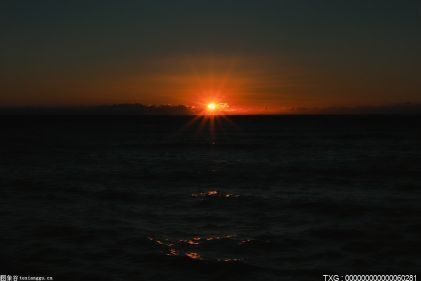【TED演讲稿】詹姆斯韦伯太空望远镜是如何揭秘宇宙的_当前观点
TED演讲者:John C. Mather / 约翰 · C · 马瑟
演讲标题:How the James Webb Space Telescope will unfold the universe / 詹姆斯韦伯太空望远镜是如何揭秘宇宙的
内容概要:The James Webb Space Telescope is a miracle of modern science and engineering. With a 21-foot, gold-coated mirror protected by a sunshield that's the size of a tennis court, it's the world's most powerful telescope and humanity's latest attempt to answer questions like: "Where did we come from?" and "Are we alone?" (It also needed to be folded up like origami in order to launch into space.) Nobel Laureate John C. Mather, the leader of the team at NASA that built the Webb, explains how the telescope will observe the first galaxies to form in the early universe, peer behind clouds of cosmic dust and gas to reveal stars being born and uncover new details about places like Europa and Titan, which could harbor life. "We're going to get a great surprise from this telescope," Mather says.
 (资料图)
(资料图)
詹姆斯韦伯太空望远镜是一项现代科学和工程奇迹。有着一块21英尺宽,镀金,且由一个网球场那么大的遮阳板保护的镜面,它是世界上最强的望远镜以及人类为回答类似“我们从哪来?”和“我们是否孤独?”的问题的最新尝试。 (为了发射进太空,它还需要被像折纸艺术一样折叠起来。)诺贝尔奖获得者,NASA建造韦伯望远镜的团队领袖,约翰 · C · 马瑟 (John C. Mather),解释了该望远镜将如何观察宇宙初期最早形成的星系,将目光穿透朵朵宇宙尘埃和气体云来揭示恒星诞生以及发觉类似木卫二和土卫六的地点的新细节,在那儿可能会有生命。“我们将通过这个望远镜获得巨大惊喜,” 马瑟说道。
*******************************************
【1】When I was six, my father told me that I was made out of tiny cells filled with chromosomes that would control my fate.
在我六岁时, 我爸爸告诉过我 我由充满染色体的小细胞组成, 它们掌控我的命运。
【2】I thought, "That's amazing.
我当时想:“这真棒。
【3】There are so many mysterious things in there, and I want to know more."
那里面有很多神秘的东西, 我想知道更多。”
【4】I read about Galileo and Darwin, and I became a scientist.
我读到过伽利略和达尔文, 并且成为了一名科学家。
【5】At that time, hardly anything was known.
那时没多少东西是已知的。
【6】We did not yet know that the chemical elements came from exploded stars, that everything you see around you was recycled from inside of stars.
我们还不知道化学元素来自恒星爆炸, 不知道你周围所见的一切 都再生于恒星内部。
【7】So we did not know we are recycled stars.
所以我们不知道我们是再生的恒星。
【8】But we set off to measure the Big Bang, and we measured the map of the cosmic microwave background radiation, using millimeter waves and it's the entire sky wrapped around on to an oval so you can see it.
但我们开始衡量宇宙大爆炸, 并且测量了宇宙微波背景辐射图, 利用毫米波 并且它是把整个宇宙 包在一个椭圆里 让你能看见它。
【9】We see that there are hot and cold spots in this Big Bang material.
我们看到,这份宇宙大爆炸资料上 有热点和冷点。
【10】Now we say, well, that's because those were there in very, very beginning, who knows exactly why, but they led to the existence of galaxies, stars, planets and, eventually, people.
现在我们会说,好吧, 那是因为它们最最开始时就在那了, 没人知道到底是为什么, 但是它们导致了星系、恒星、行星 以及后来人类的存在。
【11】No spots, no people.
没有这些点就不会有人类。
【12】So it turned out to be important.
所以它是重要的。
【13】So then how did that work?
那么它是怎么运作的呢?
【14】What happened next?
接下来发生了什么?
【15】Well, we said let's take pictures.
我们说,那我们拍照片吧。
【16】So, of course, we take pictures of the sky with the Hubble Space Telescope.
所以我们就用哈勃太空望远镜 拍摄天空的照片。
【17】This picture was taken around 1995, and it shows galaxies far, far, far away.
这张照片拍摄于大约1995年, 它呈现了离我们很远很远的星系。
【18】It shows what you can get with the telescope that's about eight feet in diameter and can observe visible light.
它展示了使用 这个大概直径八英尺 且能观测可见光的 望远镜所能得到的东西。
【19】So we were thrilled to have this picture.
因此我们当时非常激动 能得到这张图像。
【20】And it shows thousands of galaxies.
它包含了数千星系。
【21】They were unable to include the most distant galaxies, the ones that would be as they were being born, so there are no baby pictures of galaxies in this picture.
当时无法拍到那些最远的星系, 那些正在生成的星系, 所以这张图里没有 星系们的出生照。
【22】We needed to have an even bigger and more powerful telescope that could pick up the infrared light from the most distant universe that has been stretched out by the expansion of the universe.
我们需要一个更强大的望远镜, 它要能够捕捉到 来自宇宙的最角落 因宇宙膨胀被拉长的红外线。
【23】So we didn't know what we would find.
我们当时不知道能找到什么。
【24】So astronomers wrote a book and they said, "Please build us an even more powerful telescope."
所以天文学家们写了本书,并说: “请为我们造一个更强的望远镜。”
【25】And we did.
我们照办了。
【26】This is the James Webb Space Telescope, you see a gigantic mirror, it's hexagonal, it's coated with gold so it reflects infrared light.
这是詹姆.斯韦伯太空望远镜, 你看到的是一个巨大的镜面, 它是六边形的, 镀上了金来让它反射红外光。
【27】It is 21 feet across.
它有21英尺宽。
【28】It is protected by a five-layer metalized plastic sunshade as large as a tennis court.
它由一个网球场大小的 五层金属化塑料 遮阳板保护着。
【29】This telescope is so large that it could not fit into the rocket without being folded up like origami.
这个望远镜大到如果 它不像折纸一样被折叠起来 就放不进火箭里。
【30】It's an incredible engineering accomplishment to be able to even conceive and build this telescope.
能够构想并建造这个望远镜 是一项了不起的工程学成就。
【31】So we built it.
我们建造了它。
【32】And then we've launched it.
然后我们发射了它。
【33】It went up into space from French Guiana on Christmas morning, 2021.
它于2021年圣诞节早晨 在法属圭亚那被送进了太空。
【34】It was a perfect launch.
那是一次完美的发射。
【35】The Arianespace company sent it straight to where we needed to go.
阿丽亚娜空间公司把它直接送到了 我们需要它去的地方。
【36】So we think we can have 20 years of operational scientific observations with this great new telescope.
我们认为这个很棒的新望远镜 能给我们二十年的 可用科学观测。
【37】And it took only two minutes to go through the tropical clouds up towards the vacuum of outer space.
它穿过热带云层飞向外太空的真空 只用了两分钟。
【38】Now I want to show you how it unfolded in outer space, this origami telescope.
现在我想向你展示 它在外太空是如何展开的, 这个像折纸一样的望远镜。
【39】First we unfolded the solar panels.
首先我们展开太阳能板。
【40】Then we unfold the transmitter antenna so we can talk back and forth.
然后我们展开了传输天线, 来让我们能够互相交流。
【41】Then we unfold the panels that hold the great sunshade in place.
接着我们展开了 固定巨大遮阳板的板面。
【42】This takes us actually two weeks in real life.
这实际花了我们两个星期。
【43】You see it compressed here so we can show it to you.
我们在此用动画 缩短时间向你们展示。
【44】This is just a miracle of modern engineering, and it's so complicated.
这是一个现代工程的奇迹, 并且它很复杂。
【45】And you'd say, is there any way you could have done this without this great telescope?
你会问,有没有不用 这个大望远镜的 其它方法?
【46】And the answer seems to be no.
这个问题的答案似乎是没有。
【47】You need a big telescope.
你需要一个大望远镜。
【48】It needs to be in outer space.
它需要被放在外太空。
【49】It needs to be cold, so it doesn't glow and emit its own infrared.
它需要保持低温, 来防止它自己发出红外光。
【50】And third is, being very carefully unrolled all by commands from here.
第三,它需要通过地面发送的指令 来非常小心地被展开。
【51】So you ask, how could you possibly make such a complicated thing work?
那你会问, 怎么能让这么复杂的东西运作呢?
【52】Well, number one, practice, practice, practice, rehearse and test, fix it when it's not quite right.
首先,练习练习再练习, 重复并检验, 在不对的时候修正。
【53】And then, of course, have two of everything, if you possibly can.
然后尽可能备份所用东西。
【54】And third, have arguments with all of your friends to say, is this really right?
第三,和你所有朋友讨论 这个是否真是对的?
【55】Can you think of anything that's a mistake that we might be making that we should fix before we launch it?
你能想到我们正在犯的错误 并在发射前应该修正的吗?
【56】So the last step is finally to unfold the telescope itself.
最后一步就是把望远镜展开。
【57】And there it is in outer space, not quite ready to use because it's still warm and has not yet been focused.
它就这样在外太空里, 未完全准备好被使用, 因为它还是温暖且没被聚焦的。
【58】So we had to wait for several weeks for it to start to cool down to a low enough temperature that we could do the next steps.
所以我们需要等几个星期, 让它开始冷却到 一个低到足以我们开始 接下来步骤的温度。
【59】We send it to a place called Lagrange Point 2, about a million miles farther out from the Sun than we are.
我们把它送到一个 叫第二拉格朗日点的地方, 一个比我们距离太阳 还要远大约一百万英里的地方。
【60】This is a place that moves around the Sun with us every year, so the telescope does not get any farther away.
这个地方每年和我们 一起绕太阳公转, 这样望远镜就不会飞远。
【61】It is the only place that we can put a telescope where this is the setup, and you can have the one-sided umbrella that protects the telescope from the Sun and the Earth and the Moon.
这是在这种设计下 唯一可以安置望远镜的地方, 你能有一个让望远镜 不受太阳、地球和月球影响的 单面保护伞。
【62】So the next thing is, what did we see?
接下来我们看到了什么?
【63】We focused the telescope and took some pictures of the same star we looked at with the Webb.
我们将望远镜聚焦 并拍摄了些 我们用韦伯望远镜看到的恒星。
【64】So the fuzzy picture is the Spitzer Space Telescope launched in 2003.
这张模糊的图片是由2003年发射的 斯皮策太空望远镜拍摄的。
【65】The sharp picture is the new Webb telescope.
这张清晰的图片则来自 新的韦伯望远镜。
【66】We were so thrilled that it worked.
我们因为它的成功十分激动。
【67】We got a nice, sharp image of the star, and we can calculate now the sensitivity of this object, that if you were a bumblebee, a square centimeter object hovering at the distance
我们得到了一张漂亮、 清晰的恒星照片, 并且现在我们可以计算 这个物体的敏感度, 假如你是只小蜜蜂, 一个平方厘米的小物体
【68】of the Moon from the Earth, away from the telescope, we would be able to see you, both the sunlight you reflect and the heat you emit.
漂浮在离望远镜 有地球到月亮那么远的距离外, 我们将能看到你, 你反射的阳光和 你散发的热量都能。
【69】So there are no bumblebees in space, but there's something out there that we don't know.
太空里当然没有小蜜蜂, 但那里有我们不知道的东西。
【70】And I'm so sure that we're going to get a great surprise from this telescope.
我很确定我们将从这个望远镜 这里得到巨大的惊喜。
【71】So I'll show you what we look at.
我来展示下我们看到的东西。
【72】Here is an example of a place where stars are being born as we speak.
这是一个此时此刻 恒星正在诞生的例子。
【73】Now we know, more or less, that stars explode and produce dust, which goes and is recycled into new stars.
现在我们知道, 恒星爆炸产生或多或少的尘埃, 这些尘埃被回收成为新的恒星。
【74】This is a place where the recycling is happening.
这是一个回收正在发生的地方。
【75】Stars are being born in this beautiful cloud of glowing gas and dust.
一些恒星正从这美丽的由发光气体 和尘埃组成的云中诞生。
【76】On the left-hand side shows you what we see with visible light with the Hubble Space Telescope.
左边的图像是 我们用哈勃望远镜 看到的可见光。
【77】The right-hand side shows you that you can begin to see through the dust with an infrared camera that we also have on the Hubble telescope.
右边的图像是通过 哈勃望远镜上也有的红外相机 透过尘埃看到的东西。
【78】It's beautiful.
它很美。
【79】Astronomers want to see inside and we will with the Webb telescope.
天文学家们想看看内部, 我们将会做到, 通过韦伯望远镜。
【80】We can look at everything in the solar system from Mars on out.
我们可以看到太阳系内 比火星远的东西。
【81】So this is a pretty interesting one, everybody knows Mars might be alive.
这个很有意思, 众所周知火星可能有生命。
【82】What about Europa?
那木卫二呢?
【83】Europa is a satellite of Jupiter.
木卫二是木星的一颗卫星。
【84】It has a liquid ocean covered with ice.
它有着被冰覆盖的液体海洋。
【85】We know because we sent a probe out there named after Galileo himself, and we saw this and took this picture.
我们知道是因为我们曾送去 和伽利略同名的探测器, 我们看到并拍摄了这张图片。
【86】Now we know that there is water coming out from the cracks between the ice blocks and once in a while, they can be watched from here.
现在我们知道有水从冰块间的 裂缝里出来, 有时它们能从这里被观测到。
【87】And we are planning to send a probe to fly through the water jets and see if there might be any organic molecules in them.
我们正在计划送去一个探测器 飞行穿过喷出的水柱 看看它里面 是否有任何有机分子。
【88】Is it alive? Well, maybe.
它有生命吗?可能有。
【89】We'll be watching this satellite with the Webb telescope as well.
我们也会用韦伯望远镜 观察这颗卫星。
【90】Farther on out in the solar system, we've been watching Titan.
在太阳系里更远的地方, 我们观测了土卫六。
【91】Titan is the only moon in the solar system that has oceans and lakes and rain and rivers and an atmosphere on the surface.
土卫六是太阳系里 唯一有海洋和湖泊, 还有降雨和河流, 以及一个表面大气的卫星。
【92】It is so cold, though, that its liquid hydrocarbons, methane and ethane, that you would use for fuel here on Earth.
不过它非常冷, 这些都是液态烃, 甲烷和乙烷, 在地球上被用作燃料的液体。
【93】So we'll be examining this with the Webb telescope and we'll be sending a probe out there to land with even a helicopter to go exploring.
我们会用韦伯望远镜来观测它, 向那送去探测器, 甚至放下无人直升机来探索。
【94】So is this a place that's interesting for life?
这是一个生命 觉得有意思的地方吗?
【95】Possibly.
可能是。
【96】People ask me all the time, are we sure that the kind we have here is the only kind?
人们总是问我, 我们肯定我们是 生命的唯一形态吗?
【97】Well, maybe not.
也许不是。
【98】And if not, this is a good place to look because it's different, but it still has solids, liquids and gases, and it has a liquid hydrocarbon, which might be a possible solvent.
如果不是,这是一个开始寻找的 好地方,因为它不一样, 但它依旧有固体、液体和气体, 而且它有可能作为溶剂的烃。
【99】We'll see.
我们会知道的。
【100】Next thing we want to look at is, are there planets around other stars that might have life?
接下来我们想看看, 其它恒星周围有没有 可能存在生命的行星?
【101】So we will be looking in this way at small stars that have Earth-sized planets.
我们将以这种方式 观测有地球大小行星的小恒星。
【102】When a planet goes in front of the star, it can block some starlight, some of the starlight goes through the atmosphere of the planet, if it has one, and on its way to our telescope, and we can analyze that and look for the chemistry of such an atmosphere.
当一颗行星运动到恒星前方, 它能够挡住部分星光, 星光的一部分会穿过行星的大气, 如果它有大气的话, 在光到我们望远镜的路上, 我们能分析它 并找出这类大气的化学成分。
【103】So, number one, does a little Earth-like planet out there have an atmosphere?
第一,一颗小型类地行星 是否有大气?
【104】Number two, does it have any molecules in the atmosphere?
第二,在它的大气里是否有任何分子?
【105】And number three, could they be water?
然后第三,它们会不会是水?
【106】Is there enough water out there so that there could be a liquid ocean?
如果那里有足够的水, 那里会不会有液态海洋?
【107】Well, maybe.
有可能。
【108】We will find out and we'll tell you.
我们会一探究竟并告诉你。
【109】So are we alone?
我们是孤独的吗?
【110】Well, I don't know.
我不知道。
【111】But we'll be going on after this project to even more powerful telescopes that can examine little Earths around stars like the Sun.
但我们会在这个项目后 继续用甚至更强大的望远镜 观测绕着类似太阳的恒星 的“小地球”们。
【112】And then we'll be able to say, "Really, really, are they like home?"
然后我们将能够说, “说实话,它们和地球相似吗?”
【113】And maybe yes.
有可能是。
【114】We will be telling you all about what we find out, beginning with our first scientific observations this summer.
我们将把我们 找到的一切告诉你, 从我们这个夏天的 第一次科学观测开始。
【115】So please stay tuned.
所以请保持关注。
【116】Astronomers travel with the speed of light and the speed of imagination.
天文学家们以光和想象力的速度 前进着。
关键词:












